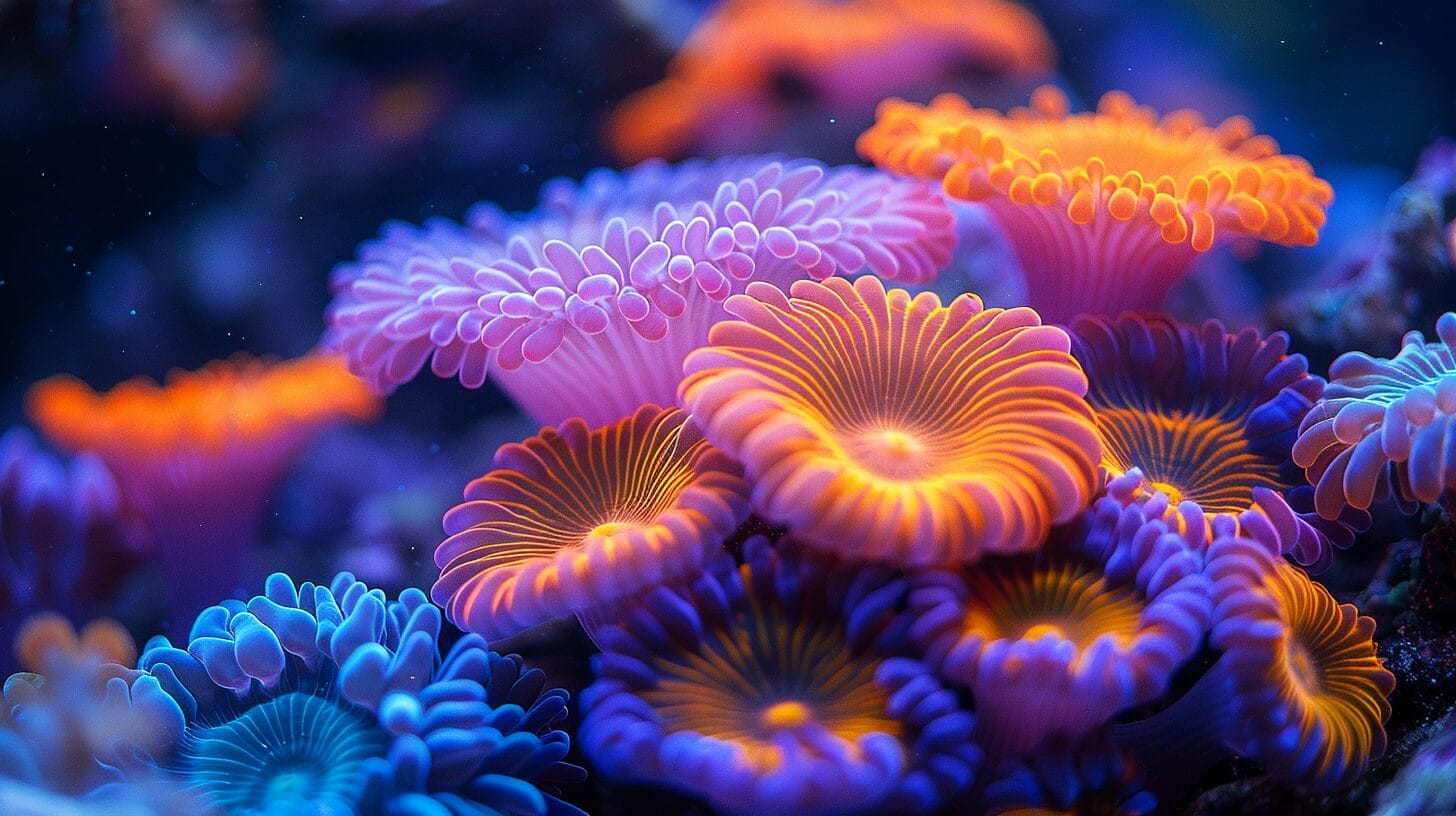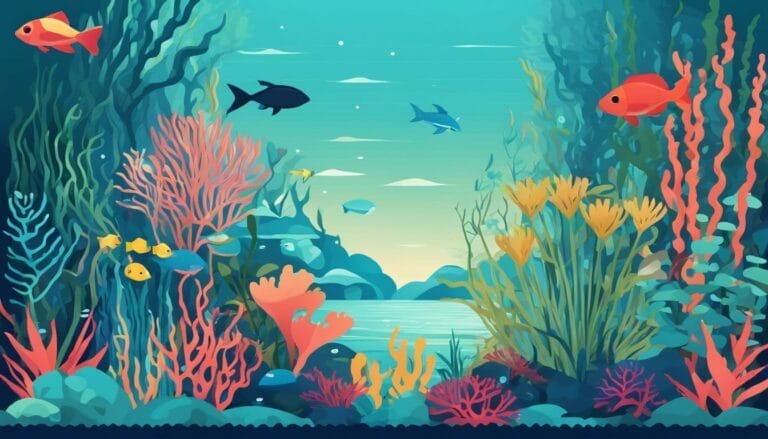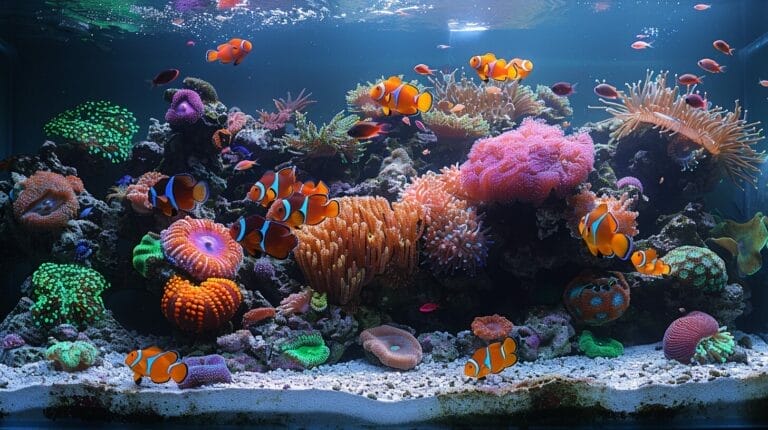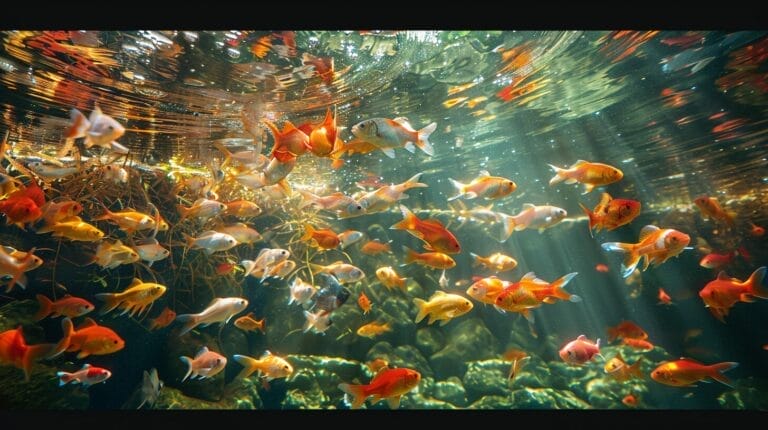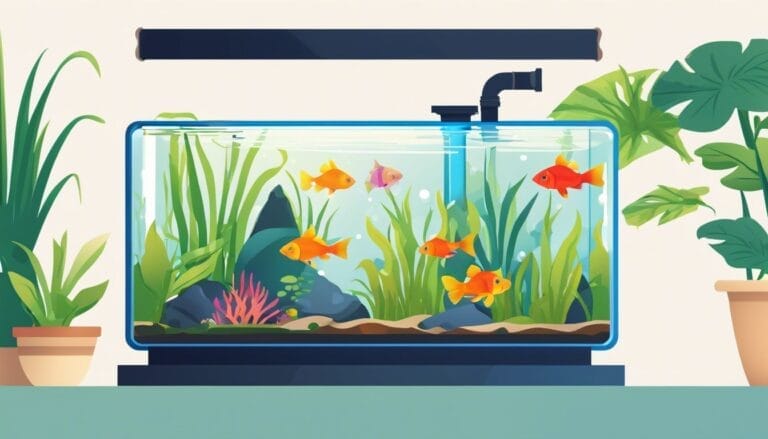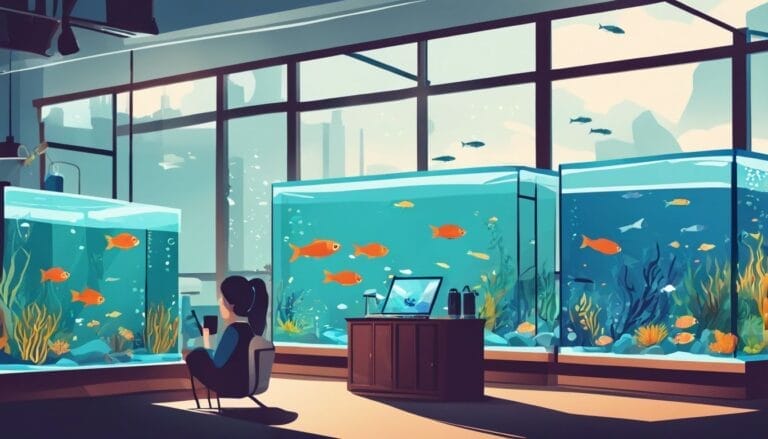LPS Coral Types: A Guide to Reef Tank Beauty
Prepare to dive into the alluring world of Large Polyp Stony (LPS) coral types, where grace meets vibrance. With a spectrum of colors, mesmerizing patterns, and captivating charm, these corals are a marvel to behold in reef tanks.
Euphyllia, Acanthastrea, and Favites are the show-stoppers, while Bubble, Hammer, and Brain corals serve as the perfect introduction for beginners.
Key Takeaways
- Euphyllia, Acanthastrea, and Favites are stunning LPS coral types for vibrant reef tanks, representing some of the favorite choices among reef enthusiasts for keeping LPS corals.
- These corals offer unique aesthetics with graceful tentacles, vivid colors, and mesmerizing patterns.
- Combination of these corals enhances the beauty of your reef tank for a visually captivating display.
- Easy-care LPS corals like Bubble, Hammer, and Brain corals are ideal for beginners.
- Proper lighting, feeding, and water flow are crucial for the health and beauty of LPS corals, illustrating how corals need specific conditions to thrive.
The Basics of LPS Coral for Beginners
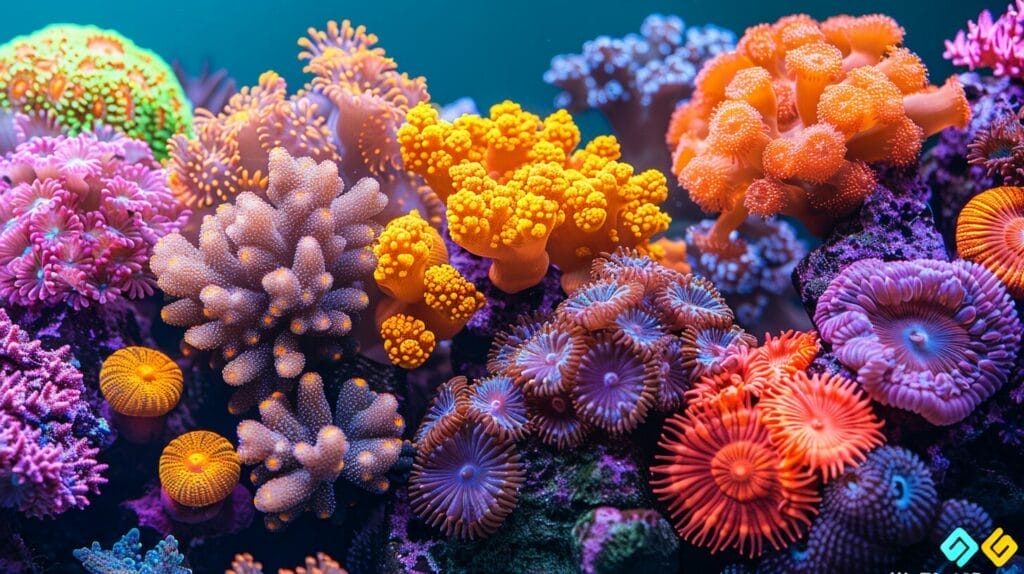
For rookies in the world of reef aquariums, LPS corals serve as an ideal starting point. These corals boast fleshy polyps with a hard skeleton at the base, a sturdy structure that can withstand water flow within the tank.
The key to the growth of these corals is the right balance of light. It supports their photosynthetic needs, but too much or too little can be harmful. Feeding them properly, with zooplankton or other suitable coral foods, is equally crucial for their health, supplementing their diet to support growth is vital.
Best LPS Corals for Your Aquarium
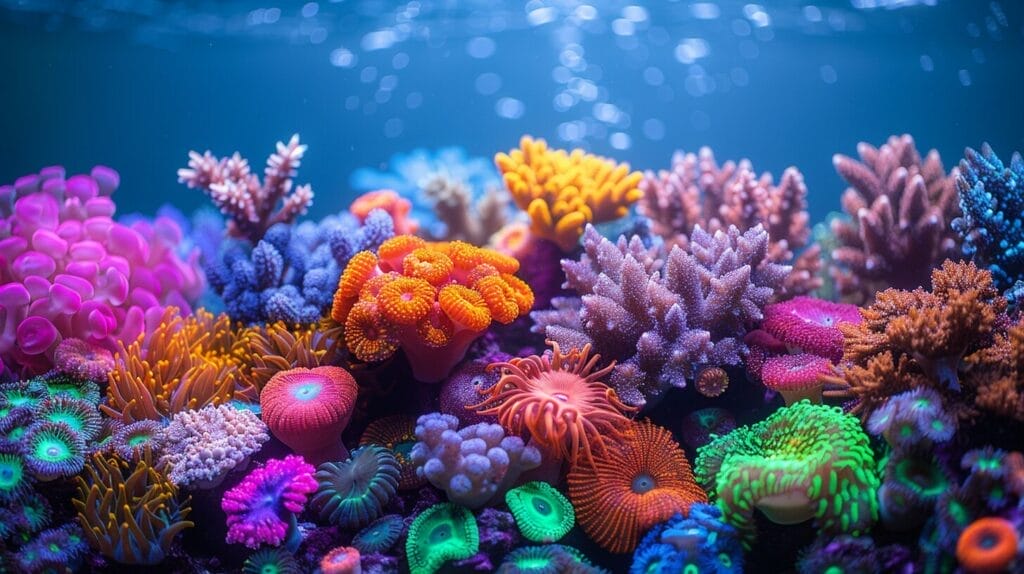
When choosing LPS corals for your aquarium, consider the unique features and characteristics of each coral type to improve your reef tank’s beauty and diversity, focusing on common LPS corals for their easy-keeping qualities.
- Euphyllia, known as the ‘Anchor’ LPS coral, is a popular choice due to its graceful tentacles that sway in the water, adding movement to your tank and providing a natural environment for fish.
- Acanthastrea, also referred to as the ‘Acan’ LPS coral, comes in a variety of vivid colors and patterns, making it a striking addition to any reef tank.
- Favites, known as the ‘Honeycomb’ LPS coral, is admired for its intricate honeycomb-like patterns that create a mesmerizing effect underwater.
Each of these LPS corals offers a unique aesthetic appeal and can thrive in a well-maintained reef tank environment.
By carefully selecting a combination of Euphyllia, Acanthastrea, and Favites, you can create a visually stunning underwater landscape that will captivate all who see it, including the gracefully swimming fish among the corals.
Remember to provide proper care and maintenance to help these LPS corals flourish and continue to enhance the beauty of your reef tank.
Choosing the Easiest LPS Corals for Beginners
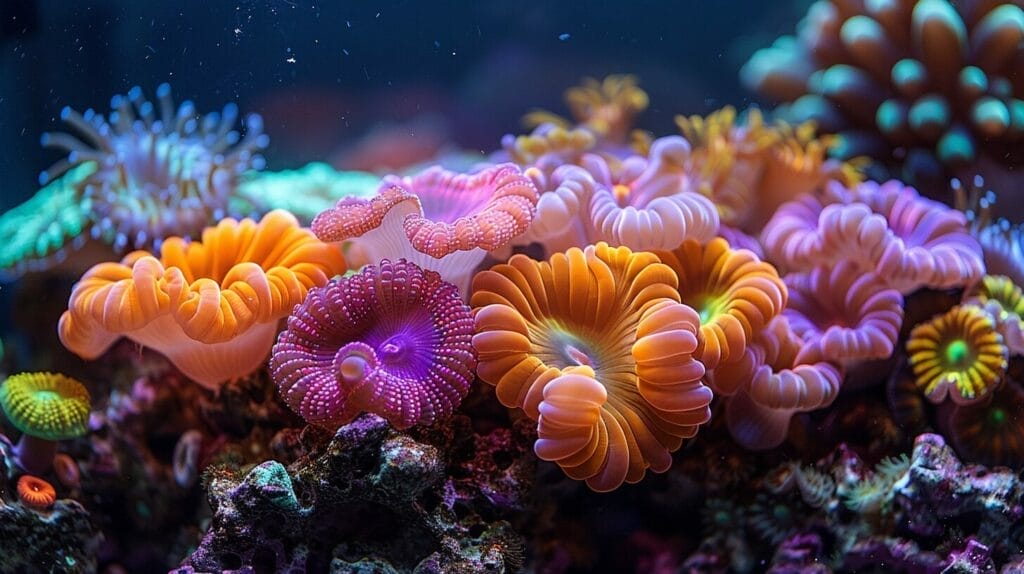
Considering the easiest LPS corals for beginners, starting with hardy options like the Bubble For beginners, hardy corals like the Bubble coral (Plerogyra sinuosa) make a great introduction to coral care. They adapt well to different tank conditions, making them a beginner-friendly choice.
The forgiving Hammer coral (Euphyllia ancora) tolerates slight fluctuations in water parameters, making it a great option for newcomers. Brain corals (Favites) are also a fantastic choice for their hardiness and unique aesthetics.
Care Guidelines for Your LPS Corals
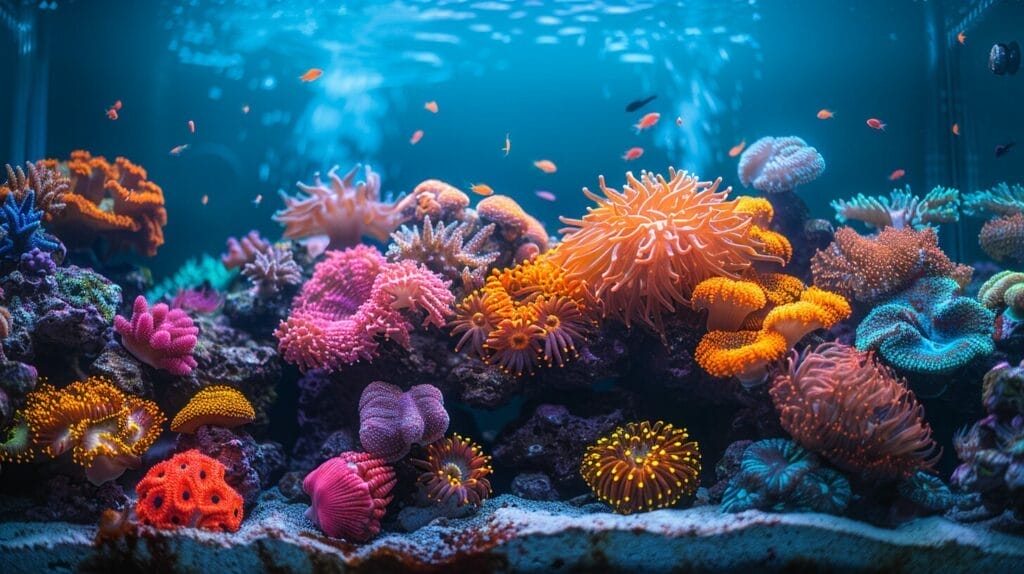
Proper care guidelines are essential for maintaining the health and beauty of your LPS corals, ensuring they grow at an optimal rate. To guarantee your LPS corals thrive, it’s vital to meet their nutrient needs, provide ideal light conditions, and guarantee suitable water movement in your reef tank. Here are some care guidelines to help you keep your LPS corals healthy:
| Aspect | Care Guideline |
|---|---|
| Feeding | Feed LPS corals with phytoplankton, zooplankton, or special coral foods 1-2 times a week. Avoid overfeeding. |
| Lighting | Provide moderate to high-intensity lighting. T5 fluorescent, LED, or metal halide lights are suitable options. Ensure a 10-12 hour light cycle daily. |
| Water Movement | Aim for gentle to moderate water flow in the tank. Use powerheads or wavemakers to create random flow patterns. Avoid direct flow onto the corals to protect soft corals. |
| Water Parameters | Maintain stable water parameters: temperature (75-80°F), salinity (1.024-1.026), pH (8.1-8.4), alkalinity (8-12 dKH), calcium (400-450 ppm), and magnesium (1350-1500 ppm). |
Following these care guidelines will help your LPS corals flourish in your reef tank.
What Are the Best LPS Coral Types for Optimal Care in a Reef Tank?
When considering optimal montipora coral placement in a reef tank, it’s essential to choose the best LPS coral types for proper care. Hammer coral, torch coral, and frogspawn are popular choices known for their relatively easy care and beautiful appearance in a well-maintained reef tank.
Troubleshooting Common Issues with LPS Corals
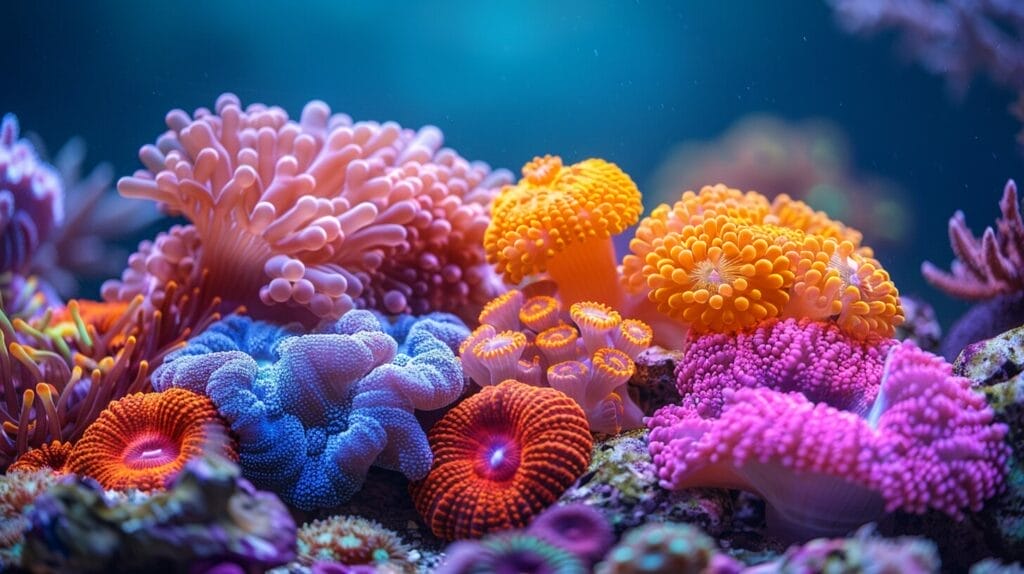
In troubleshooting common issues with LPS corals, we often observe signs of stress that require prompt attention. Here are some common problems and solutions we encounter:
- Changes in Color: LPS corals may change color due to stress from inadequate lighting or water quality.
- Receding Tissue: This can be a sign of disease or poor water conditions, requiring swift action to prevent spreading.
- Loss of Polyp Extension: Insufficient flow or feeding can lead to LPS corals not extending their polyps fully, essential for the health of corals and their cohabitants like fish and shrimp.
- Bleaching: Stressors like temperature fluctuations or intense lighting can cause bleaching in LPS corals.
- Overfeeding: Excess food can accumulate, leading to water quality issues that harm LPS corals.
Conclusion
Overall, LPS corals are a beautiful addition to any reef tank, offering a wide variety of colors and shapes to enhance your underwater world.
With the right care and attention, these corals can thrive and bring a vibrant energy to your aquarium.
By choosing the easiest LPS corals for beginners and following care guidelines, you can enjoy the beauty and tranquility they bring to your reef tank for years to come.
Frequently Asked Questions
What are LPS corals?
LPS stands for Large Polyp Stony corals, which are hard corals with large fleshy polyps commonly found in saltwater aquariums.
What are the top 10 LPS corals for a reef tank?
The top 10 LPS corals for a reef tank include hammer coral, candy cane coral, torch coral, blastomussa coral, and various other colorful and easy-to-keep species.
How should LPS corals be placed in a tank?
LPS corals require medium to high placement in the tank with moderate water flow and lighting intensity to thrive.
What are the characteristics of candy cane coral?
Candy cane coral is a type of LPS coral known for its sweeper tentacles and distinct colored tips, usually in shades of purple, green, or yellow.
What are the differences between LPS and SPS corals?
LPS corals have large fleshy polyps and require lower flow and light compared to SPS corals, which have smaller polyps and high flow and light requirements.

